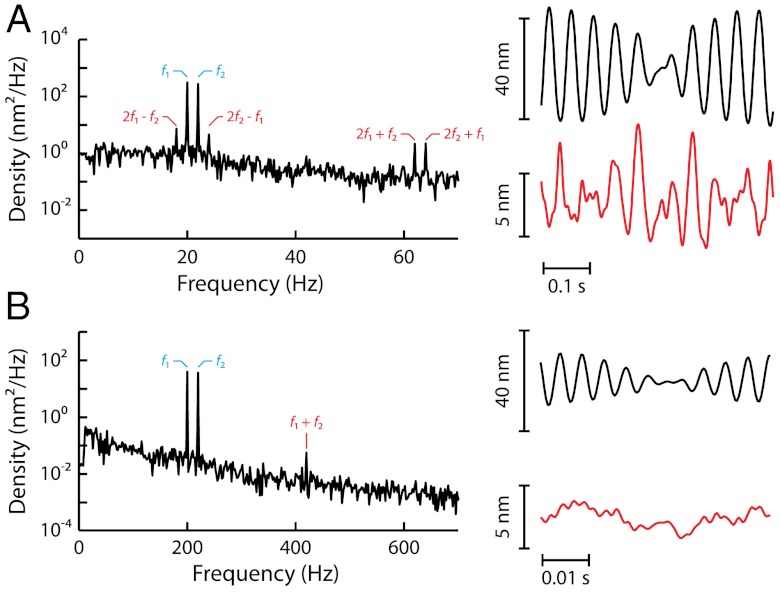Fig. P1.
Two-tone distortions by a single hair-cell bundle. A hair bundle that oscillated spontaneously at 20 Hz was subjected to the sum of two sinusoidal forces at frequencies f1 and f2 with equal amplitudes (2 pN). (A) When stimulation was applied near the bundle’s characteristic frequency of oscillation—i.e., a condition that maximizes nonlinear amplification via active hair-bundle motility—the spectral density of bundle movement displayed cubic distortion products at 2f1 ± f2. In the temporal domain, the bundle’s global response displayed a beating pattern of motion (black line). Filtering the primaries f1 and f2 in the frequency domain revealed the temporal waveform of distortion (red line) that the hair bundle introduced into its response to the stimulus. (B) For stimulation away from the characteristic frequency, which probes passive hair-bundle mechanics, the movement evinced only a weak quadratic distortion product at f1 + f2.

